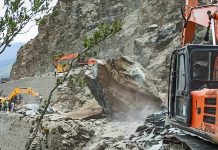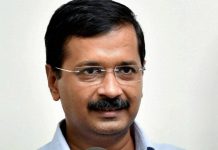Incredibly, there were 10,350 fires in Delhi in 2022, according to the Delhi Fire Service. Besides other fires in the first six months of 2022, there were 60 fatalities of the poorest of the poor in the Jhuggi fires including seven in Gokulpuri and 27 in Mundka. A report by Amiitabh Srivastva
‘When beggars die there are no comets seen
The heavens themselves blaze forth the death of princes’.
A quote from Julius Caesar
There is a lot of talk about the so-engrossing and watchable ‘Trial by Fire’ screening on Netflix based on the Uphaar fire of June 13,1997 where 59 persons perished and a hundred were injured.
The film is based on a novel with the same name written by Shekhar Krishnamurthy and Neelam Krishnamurthy who lost their two children 17-year old Unnati and 13-year old
Ujjwal who had gone to see the matinee show of ‘Border’ which went on to become a super hit of that year.
The film is a poignant reminder of our system where getting justice is fraught with grave consequences, especially if the fight is against one of the biggest builders of the country.
What adds power to the narrative is the performance by the brilliant actors Abhay Deol and Rajshri Deshpande as Shekhar and Neelam Krishnamurthy which makes it a riveting watch.
But is compensation to the victim’s families and jail term to the Ansal brothers the end of the story?
When I recalled that I was personally an eye-witness to two more huge fires, one almost a filmi one after the Uphaar tragedy I decided to extend the canvas of my write-up.
The details of the fight to get compensation of Rs 60 crore by the gritty Association for Victims of the Uphaar Tragedy (AVUT) led by eminent lawyer KTS Tulsi, who insisted on the victims coming together to fight the case, the jail term to Sushil and Gopal Ansal and their subsequent release because of their advanced age are all in public domain.
But once we come out of the Uphaar tragedy, should we not start thinking as to what was the end result of this prolonged trial, besides the compensation? Did the high rise buildings in Delhi become safer after that?
Almost exactly six years after the Uphaar fire (on June 30,1987), I was returning to my home in Patel Nagar with some friends when we noticed a helicopter hovering over a building in Rajendra Place and people below shouting for help.
Having seen ‘The Burning Train’ a few days back I thought a film shooting was on but when we reached the spot we realised that about 400 people in the Gopala Towers in Rajendra Place had been trapped in the building. The fire had burst out on a lower floor and those above it had panicked. The sun of June above and flames below made their situation perilous.
All the bigwigs of Delhi were telling the Fire Brigade people to hurry but they were helpless because the fire extinguisher could not spray its water to the height of the building.
In panic, some officials summoned a helicopter but when it started hovering above the tower the flames became wilder and there were shouts from the crowd to send the helicopters away.
Finally, after about five hours, the Fire Brigade officials found a way out.
They put a ladder across Gopala Towers to the adjacent building, probably Pragati Tower if I remember correctly, and helped the trapped people cross over to safety.
Next incident on July 31,1987 occurred next to my office in Hindustan Times. We were about to finalise the release of Evening News at about 11.30 am when someone noticed a fire in the next door building Ansal Bhawan.
Obviously, we decided to cover the event and delay the edition.
The scenes were horrific.
Heavy smoke was choking the workers in the office building. As is ‘normal,’ the stairs were either locked or blocked with furniture.
Taking a cue from the Gopala Towers rescue operation or using their common sense, some labourers put up an iron rod across to save the victims to cross to safety.
But the first person who tried to hold the rod found it too hot to catch it and let go. He died from the fall. Later some newspapers called it a suicide but I as a witness can testify that the chap had left the hot rod and fell down.
The usual rush of VIPs including then Home Minister Buta Singh, his two deputies P Chidambaram and Chintamani Panigrahi and of course Police Commissioner Ved Marwah only made matters worse.
VIPs obviously cannot miss out on photo-ops even if it is a fire, where their visits only make rescue operations difficult.
But do human lives matter at all except in elections in this country?
The fact is that a high-powered committee appointed by the then Lt.Governor Jagmohan had revealed that not even one, I repeat, not one of the 200 high rise buildings in Delhi was safe. Most of them did not have an NOC as they did not have clear passage for Fire Brigade vehicles as renting out the premises makes more monetary sense.
Interestingly, among the buildings that did not have NOC from the Delhi Fire Service included the DDA building at Vikas Minar, Hansalaya, Akashdeep building, Nirmal Towers, the huge LIC building in Connaught Place and Rohit House. I was told by my sources that even the Hindustan Times building was black-listed at that time.
This is a pity but the reasons are more than obvious to anyone who wants to face the reality.
When the final say in safety clearance should be that of the Fire Service, even after the Delhi Fire Act had been issued in March 1987, does anyone really care for them?
There was a time when politicians whom we elect were supposed to be simple, down to earth, honest blokes with whom the poor could relate.
But today, it’s impossible to even locate such candidates if anyone wants to choose them.
Mafias are not only Bahubalis like Brij Bhushan Singh, they could be owning colleges, hospitals, hotels, guest houses and newspapers, any entity that spells MONEY.
They don’t spend so much resources and muscle power to get elected for the paltry salaries that they get as MLAs or MPs.
Come on! We know better than that.
And if there is one or more than one victim of a calamity like a fire or any other calamity, a routine condolence message by the highest of the land or the state and a monetary compensation silences all critics.
The March of democracy cannot be halted for a few lives lost in a country that has already superseded China in You Know What?
But if you thought there were only two or three fires in Delhi you would be surprised to know that there were 10,350 fires in Delhi in 2022, according to the Delhi Fire Service.
Besides other fires in the first six months of 2022, there were 60 fatalities of the poorest of the poor in the Jhuggi fires including 7 in Gokulpuri and 27 in Mundka.
Why is no one making a film on their deaths or a KTS Tulsi or a Jethmalani fighting in the Supreme Court for compensation for them?
More criminal and dangerous are fires in hospitals across India which have taken a toll of more than 120 lives in two years since the pandemic from August 2020.
In November, 2021, a fire in the Ahmedabad Civil Hospital took the lives of 14 of the 17 patients admitted for Covid treatment.
The same year a fire in Bhandara Civil Hospital in Maharashtra had killed 10 babies.
And this is not a recent phenomenon confined to one city. The PG Institute of Chandigarh had reported 385 incidents of fire between 2016 to 2021.
According to a 2020 study in the International Journal of Community Medicines and Health that analysed 33 hospital fires in India between 2019 to 2019, as many as 25 had occurred in government hospitals on which the poor are dependent.
Which brings me back to my original premise.
Every death is a death whether in a cinema hall, a jhuggi or a hospital.
Then why should we be talking only about a ‘heroic’ fight waged by the elite gentry of Green Park that could stitch up a powerful AUVT for 25 years?











